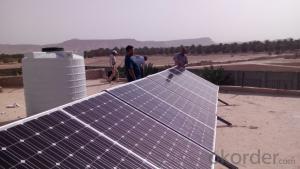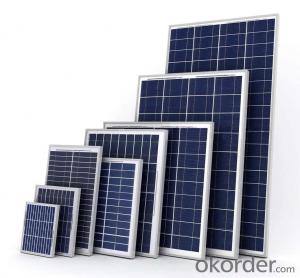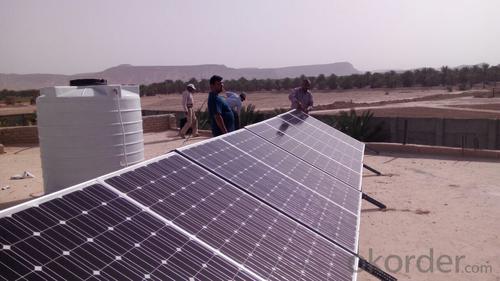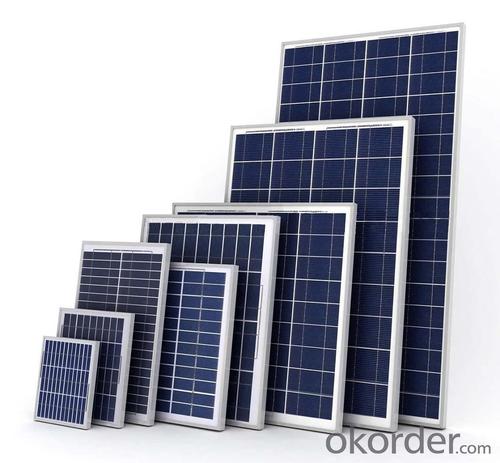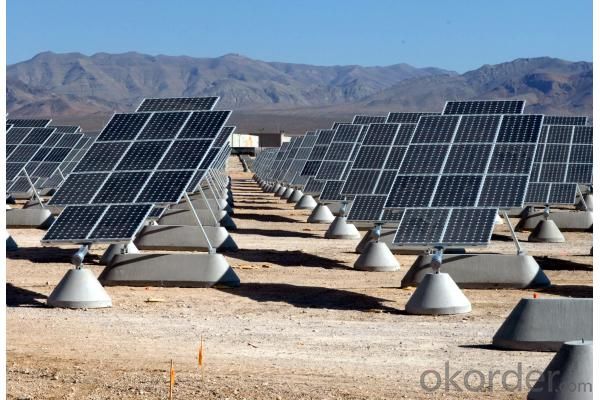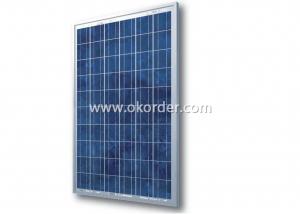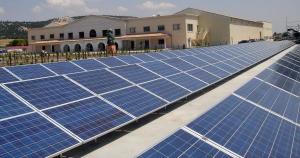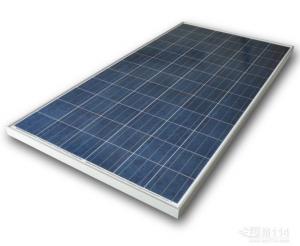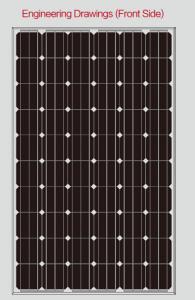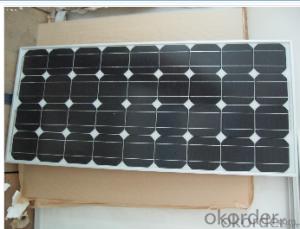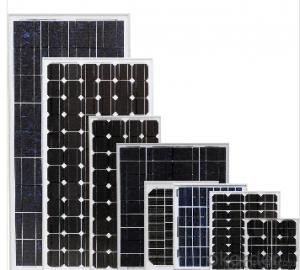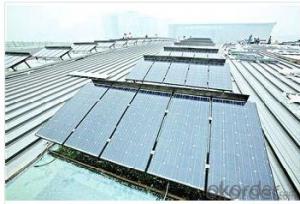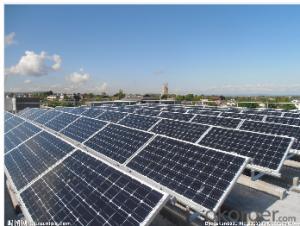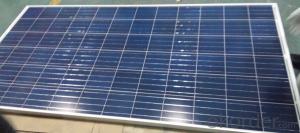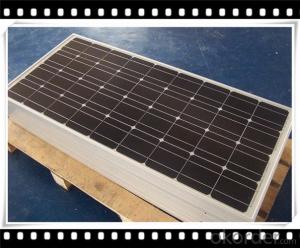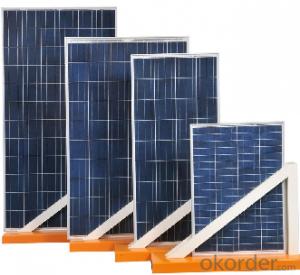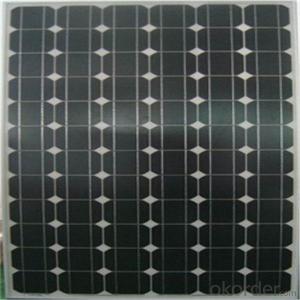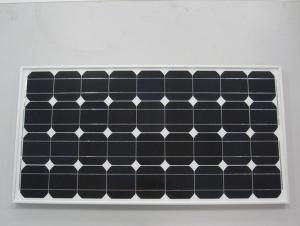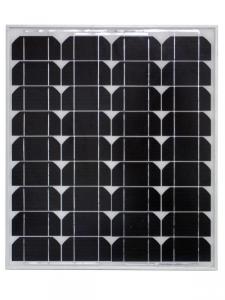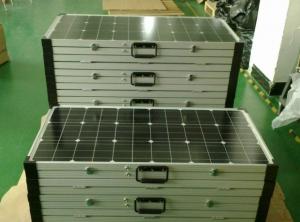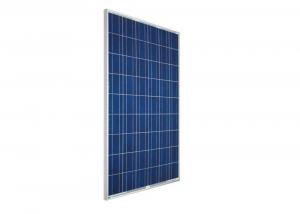RV Solar Panels for Sale - Solar Module Solar Panel Solar Energy from CNBM
- Loading Port:
- China main port
- Payment Terms:
- TT OR LC
- Min Order Qty:
- 10000 watt
- Supply Capability:
- 100000000 watt/month
OKorder Service Pledge
OKorder Financial Service
You Might Also Like
Specification
Solar Monocrystalline 125mm Panel Series(45W-50W)
Product Description
Monocrystalline Silicon Solar Panel (45-50W)
• 10 years 90% output warranty
• 20 years 80% output warranty
• High conversion efficiency mono/poly-crystalline amorphous silicon solar cells
• Modules incorporate high performance bypass diodes to minimize the power drop caused by shading
• High transmittance, low-iron tempered glass
• High performance EVA encapsulate to prevent destroying and water.
• AI frame: without screw, corner connection. 8 holes on the frame can be installed easily
• Good performance of preventing from atrocious weather such as wind and hails
• Certifications: CE IEC TUV VDE UL, Class I
Details
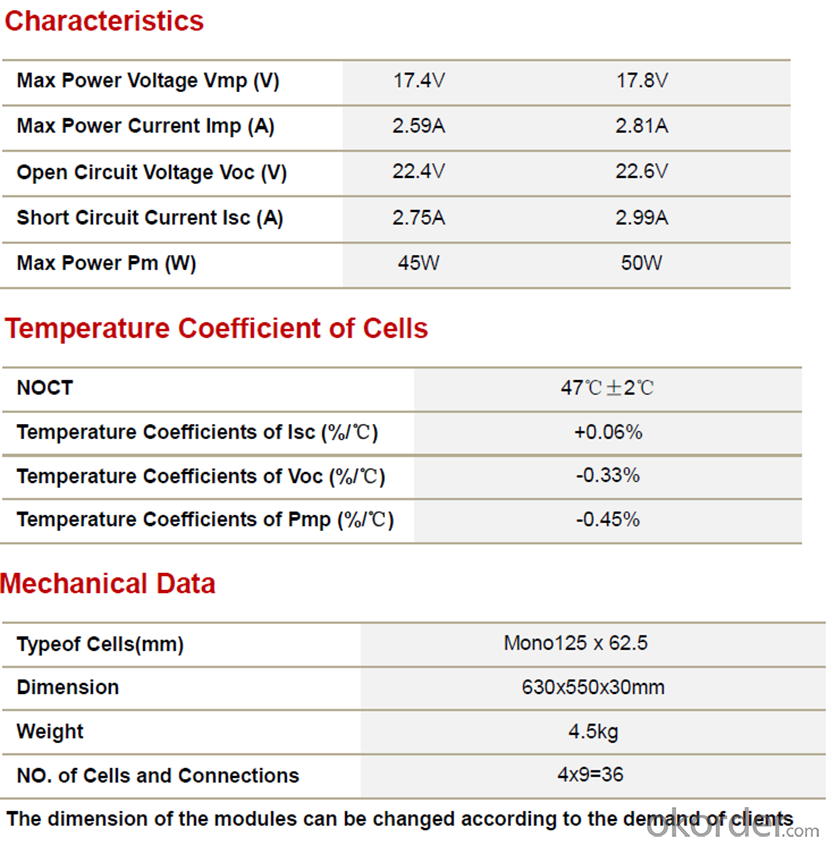
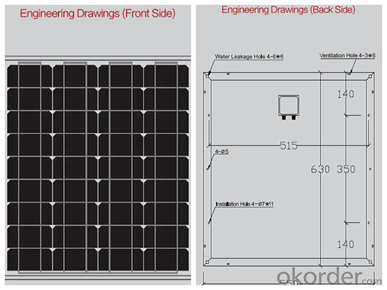
Certificate

Images
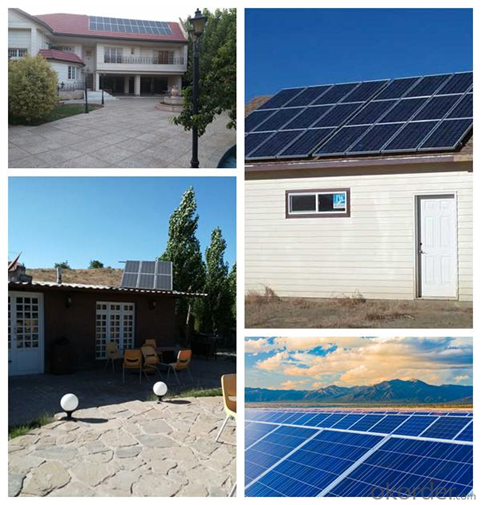
FAQ1
We have organized several common questions for our clients,may help you sincerely:
1.What price for each watt?
It depends on the quantity, delivery date and payment terms,
2.How do you pack your products?
We have rich experience on how to pack the panels to make sure the safety on shipment when it arrives at the destination.
- Q: Hi, i want to please a solar panel in Lima Peru, my Latitude is -2 and longitude -77. I understand that since i am in the southern hemisphere, my panel should be pointing north. However, i am using a program called pvdesigner, and according to this, y should face my panel with and azimuth of 00degrees (0 = south) and a tilt of 60degrees. Does this make any sense?thanks
- It doesn't make sense to me. I am at latitude 37.7,and my panels face south at about 38 degrees. Yours should be pointed north as you suggest. Being so close to the equator, and in the absence of any better information, an angle of 2 degrees would be appropriate. However, choosing the best angle will greatly to your overall efficiency, so I would try to find a more credible source, How about the folks from whom you buy the panels. They would know precisely. By the way, if you haven't installed the system yet you might consider going to a high voltage system to cut known line losses in the conductors between the panes and the inverter, I did that plus increasing the conductor size over that recommended by the manufacturer. I gained about two percent in efficiency
- Q: The Physics club in our school is trying to convince the Board of Ed to install solar panels in our school, and i was just wondering if anyone with some experience or real expertise in solar energy. I need some points about their usefulness some real pros and cons on maintenance, etc. Anything will help. Personally i would be perfectly for the idea, but i heard that the overall cost of installing them is much higher than the cost of the energy saved and government subsidies, but ive only heard about this.
- You have to approach it as an investment. Ignoring the cost of an inverter for net metering, if we consider a 500 W panel installed for $0 a watt which is $5,000 and consider an average of 8 hours of usable sunlight per day, and at a rate of $0.0 per kWh (schools probably get $0.03 per kWh) then the panel would be saving $2.7 per month in electricity. Considering that the panel has an expected lifespan of 20 years, that would give you an internal rate of return such that the monthly rate satisfies the equation: $5,000 = $2.7 * ( ( - / R^24 ) / ( - / R ) - ) By binary method we get R = 0.99588342. Taking this to the 2th power to annualize it we get Ra = 0.9570 which means that we are getting an annual return of -4.83% per annum so investing in the solar panel is the same as making an investment at an interest rate of -4.83% per year. True interest rates are low and you only get about .3% per annum by putting money in a CD but that still beats investing in solar panels which gives you a negative return on your money. Solar panels need to get a lot better before they are a good investment.
- Q: this solar panel i saw was for 500 dollars(i get a 25% discount)and i was curious will they produce electricity? or just heat?what do they do?is it a good investment?here is a link to the one i would like, no reviews but it looks new to the site.
- Also crystalline silicon, but almost triple the power. I would suggest that you have a lot more research to do before just buying a panel. A single panel like that isn't immediately useful unless you have a device that takes exactly that voltage, and is not critical. A solar water pump might fall into that category. For anything else, you would need additional equipment, such as a battery, charger, and inverter. Even at these prices, a single panel is unlikely to save you money over the electric company in the long run, unless your electricity is very expensive. There is economy of scale, so larger systems can and do save money, at least for people located in the right place. If you have a remote cabin where there is no electric company, then this could be worth it.
- Q: Solar panels are costly.Do you know any inexpensive way?So that i can make one of my own.
- you could use a water container with the sun focased on it and make it so that the water that gets heated goes out of a tube near the middle and the tube would lead to a turbine that generates electricity when water is forced through the tube( like an IV machine pump they use in hospitols only reversed so that it generates power instead of using power) then lead the tube back to the very top to release the water. PS basic principle behind idea is that water moves when heated and slows when cooled HARNESS THAT ENERGY
- Q: I have made a 5v dc 52watt solar panel and I going to be trying to charger 4 2v dc 55ah batteries. I get about 6 hours of sun on my panel. Spec below, is that a big enough panel to charge the batteries???I have 30 3x6 solar cells wired together Cell Specifications: (Watts): .75 Wp (Amps): 3.5 Imax (Volts): 0.5 V max which is where I got my 5g 52watt max (if math is wrong plz tell me) The Battery type: 2Volt 55.0ah NB Sealed Lead Acid Battery. I am using a mppt solar charger.
- OK your math on the solar panel looks correct, but you are missing some critical information. What is the load on your batteries and for how long is this load being applied. Calculate the amp-hour load to see if your solar panel can recharge your batteries with the amount of sun light available. A safe engineering standard is to have twice as much capability as required. If you have a 200 amp load for 7.5 minutes, this would be a 25 amp-hour discharge and will take your solar panel over 7 hours to recharge your batteries. Your solar panel can easily charge the batteries up to full capacity with out any load on the batteries, if the batteries are 50% discharged, this will take about 32 hours. CAUTION! I am assuming that you are hooking the batteries up in a parallel connection, that will give you over 200 amps of current. You should charge each battery up to full charge before you connect them together, if they are not at the same exact voltage when you connect them together, they will self adjust so that each battery is at the same voltage level, at 55 amps this could be a very large spark. Each cell, there are six (6) cells in a 2 volt battery, should be at 2.7 to 2.2 volts DC per cell at full charge. Make sure your battery has a voltage 3.02 to 3.26 volts open circuit or no load. This should be full charge if your batteries do not have this voltage level, say one battery is at 0 volts DC, it could have a dead or shorted cell. DO NOT use this battery until you can get it to hold a 3.02 to 3.26 volt DC level.
- Q: For those solar panels that you install on your rooftops, do they generate electricity when it's cloudy? And if yes, how much electricity does it generate compared to sunny days? For example...like only 25% electricity generated compared to sunny days?
- No, silicon photovoltaics reacts to a very specific frequency of infrared light which matches the bandgap energy of it's outer electron shell. This frequency is reflected by clouds. However, thermal solar collectors such as evacuated tube collectors can function under cloudy skies albeit at a lower rate and there is at least one hybrid photovoltaic and thermal panel designed to take advantage of this.
- Q: first of all, to be honest i have totally no idea on how a solar panel works.my task is to design something like a solar powered street lamp which store sun energy during day time and convert it into electrical energy then light energy so that the lamp can work during night time.any ideas on how to design the solar panel? which can store enough or more enegry in case there is no sunlight another day. and low cost as well :D
- You okorder /
- Q: I'm writing a lab and I have to put information about solar panels in it. The history, who started them, why they are useful etc. any good sites that can help me?
- just type in solar panels and go to wikipedia theres a ton of information good luck!
- Q: where can i get some solar panels for a camper trailer
- hardware store
- Q: Simplfy it so i can understand pls and put it in stages such as . sun hits solar panel plsHow many different types of solar panels are there?
- Solar panels are made of a series of solar cells.solar cells are an electical device that convert sun energy directly into electicity by the photovoltaic effect,which is an physic and chemical phenomenon.solar cells are made of special materials called semiconductors such as silicon,which is currently used most commonly.Basically, when light strikes the cell, a certain portion of it is absorbed within the semiconductor material.This means that the energy of the absorbed light is transferred to the semiconductor. The energy knocks electrons loose, allowing them to flow freely.This flow of electrons is a current, this current, together with the cell's voltage (which is a result of its built-in electric field or fields), defines the power (or wattage) that the solar cell can produce.
Send your message to us
RV Solar Panels for Sale - Solar Module Solar Panel Solar Energy from CNBM
- Loading Port:
- China main port
- Payment Terms:
- TT OR LC
- Min Order Qty:
- 10000 watt
- Supply Capability:
- 100000000 watt/month
OKorder Service Pledge
OKorder Financial Service
Similar products
Hot products
Hot Searches
Related keywords
